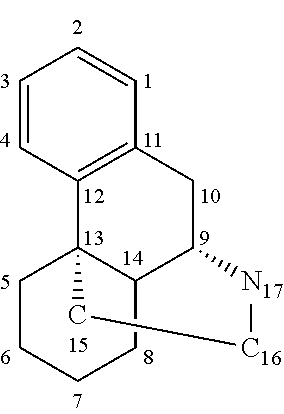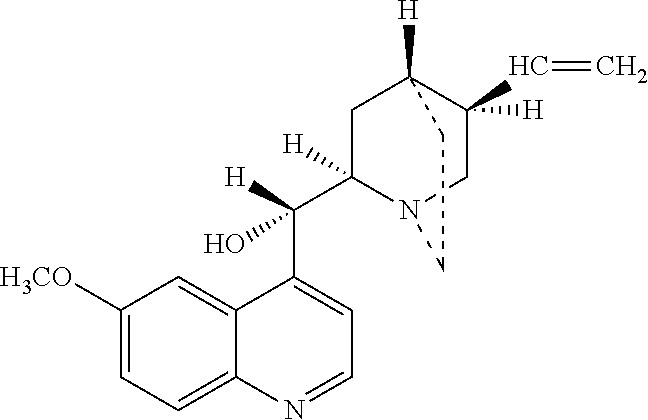Method of reducing CNS and gastrointestinal side affects associated with long-term dextromethorphan/low-dose quinidine combination therapy
a combination therapy and dextromethorphan technology, applied in the direction of heterocyclic compound active ingredients, drug compositions, biocides, etc., can solve the problems of emotional problems, emotional lability or pseudobulbar affect, and the inability to control the emotional display of the patien
- Summary
- Abstract
- Description
- Claims
- Application Information
AI Technical Summary
Benefits of technology
Problems solved by technology
Method used
Image
Examples
example 1
A Double-Blind, Randomized, Placebo-Controlled, Multicenter Study to Assess the Safety and Efficacy and to Determine the Pharmacokinetics of Two Doses of AVP-923 (Dextromethorphan / Quinidine) in the Treatment of Pseudobulbar Affect (PBA) in Patients with Amyotrophic Lateral Sclerosis and Multiple Sclerosis.
[0074]This was a multicenter, randomized, double-blind, three-arm parallel, placebo-controlled study of 12 weeks duration comparing two different doses of AVP-923 to placebo followed by an optional open label treatment phase. The objectives of the study were to evaluate the safety, tolerability, and efficacy of two different doses of AVP-923 (capsules containing either 30 mg of dextromethorphan hydrobromide and 10 mg of quinidine sulfate [AVP-923-30] or 20 mg of dextromethorphan hydrobromide and 10 mg of quinidine sulfate [AVP-923-20]) when compared to placebo, for the treatment of PBA in a population of patients with amyotrophic lateral sclerosis (ALS) or multiple sclerosis (MS) o...
example 2
Reduced Side Effects Associated with Dextromethorphan / Quinidine Combination Therapy by Administering a Daily Dose of 30 Mg Dextromethorphan, 10 Mg Quinidine
[0098]Combination therapy of DMQ 30 / 10 and DMQ 20 / 10 with the administration of a sub-optimal combination dose (titration) for a period of time offers improved efficacy and decreased risk (Table 3). In this clinical study, patients were to take one capsule of AVP-923-30 / 10 (30 mg dextromethorphan, 10 mg quinidine), or one capsule of AVP-923-20 / 10 (20 mg dextromethorphan, 10 mg quinidine), or placebo for period of one week. Patients then started taking one capsule two times a day (every 12 hours) for the remaining 11 weeks. This titration dosing regimen provides a significant reduction in the occurrence of adverse effects, as compared to dosing regimens without titration dosing, e.g., a combination dose of 30 mg dextromethorphan, 30 mg quinidine, two times a day, every 12 hours (DMQ 30 / 30).
[0099]The proportion of patients reportin...
PUM
| Property | Measurement | Unit |
|---|---|---|
| weight | aaaaa | aaaaa |
| weight ratio | aaaaa | aaaaa |
| weight to weight ratio | aaaaa | aaaaa |
Abstract
Description
Claims
Application Information
 Login to View More
Login to View More - R&D
- Intellectual Property
- Life Sciences
- Materials
- Tech Scout
- Unparalleled Data Quality
- Higher Quality Content
- 60% Fewer Hallucinations
Browse by: Latest US Patents, China's latest patents, Technical Efficacy Thesaurus, Application Domain, Technology Topic, Popular Technical Reports.
© 2025 PatSnap. All rights reserved.Legal|Privacy policy|Modern Slavery Act Transparency Statement|Sitemap|About US| Contact US: help@patsnap.com



